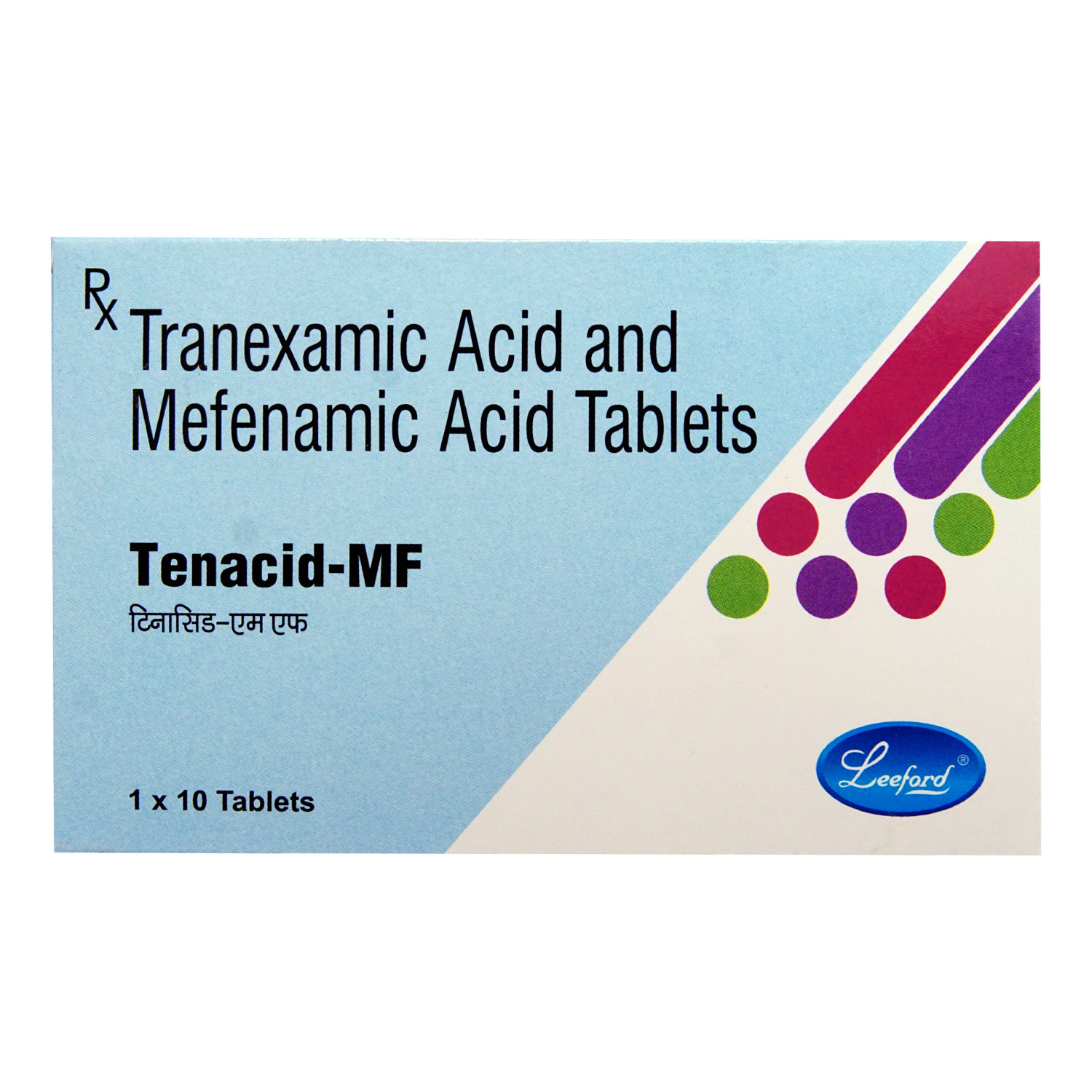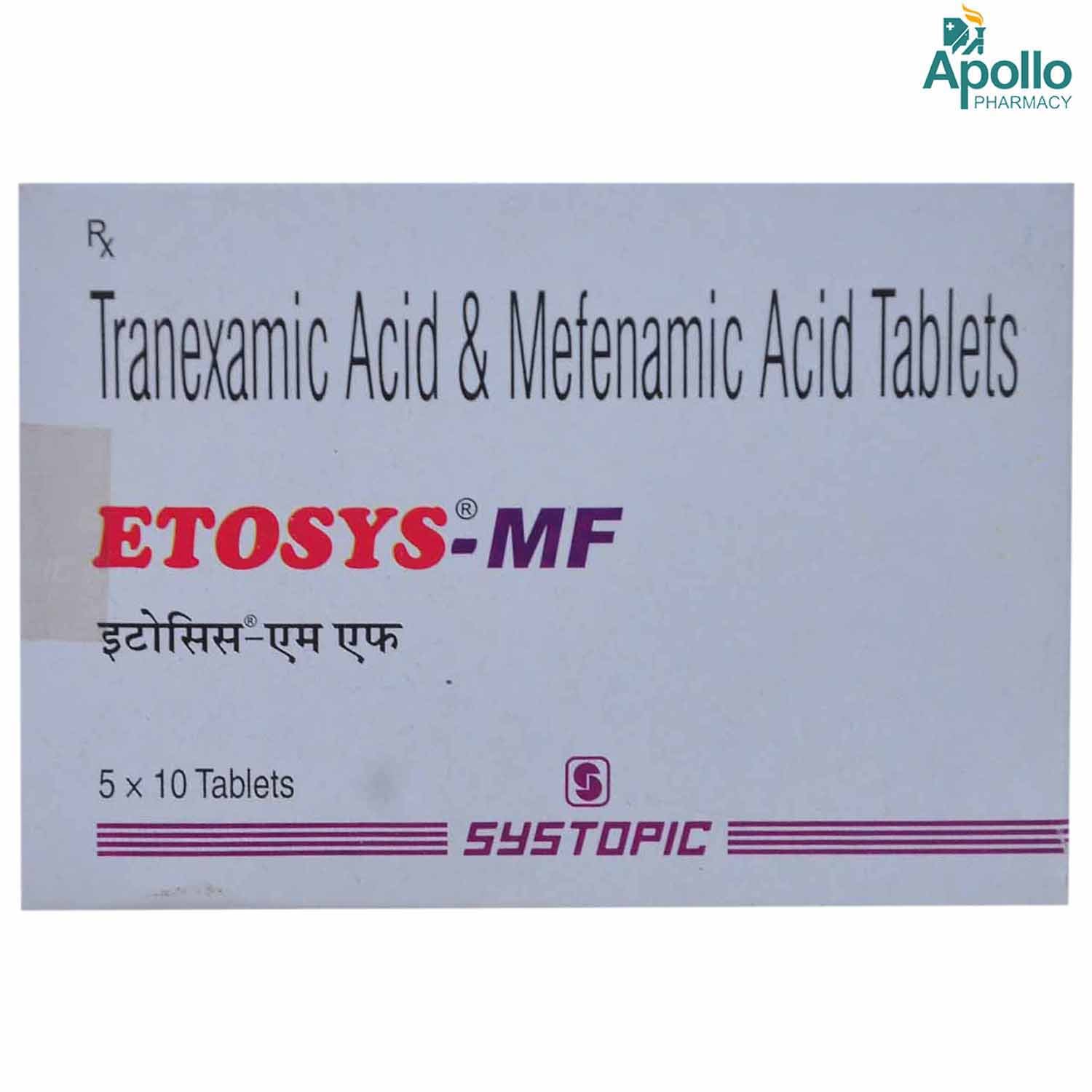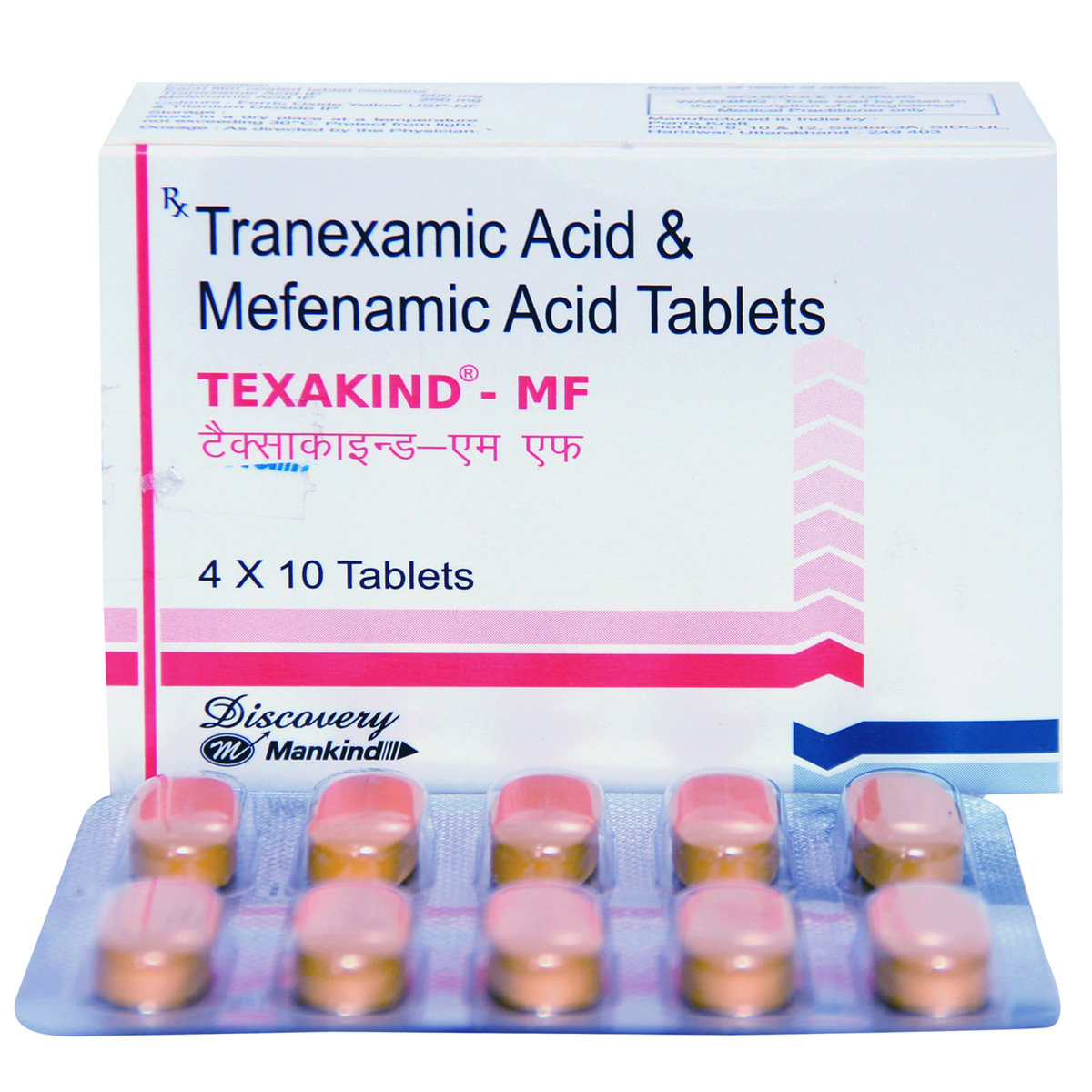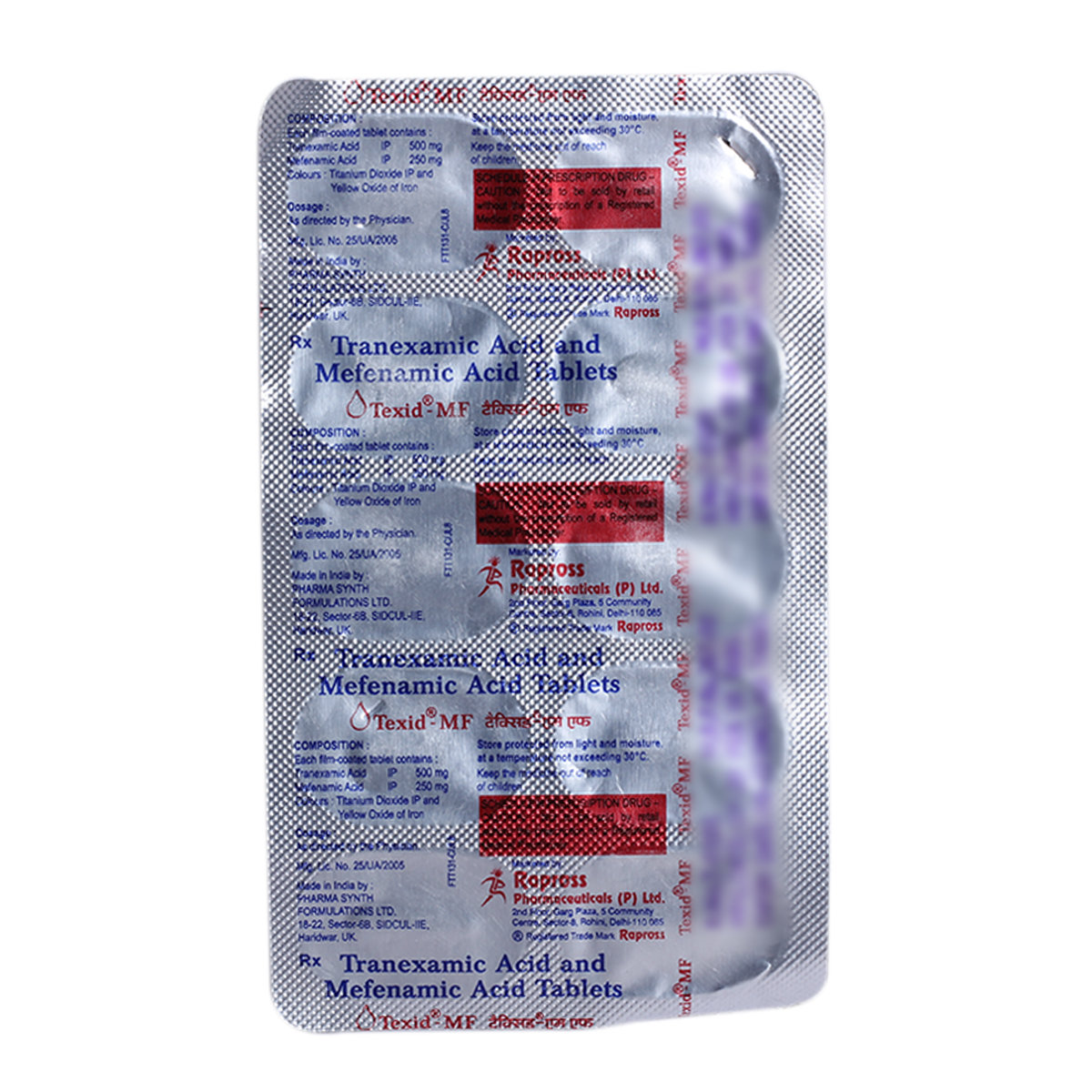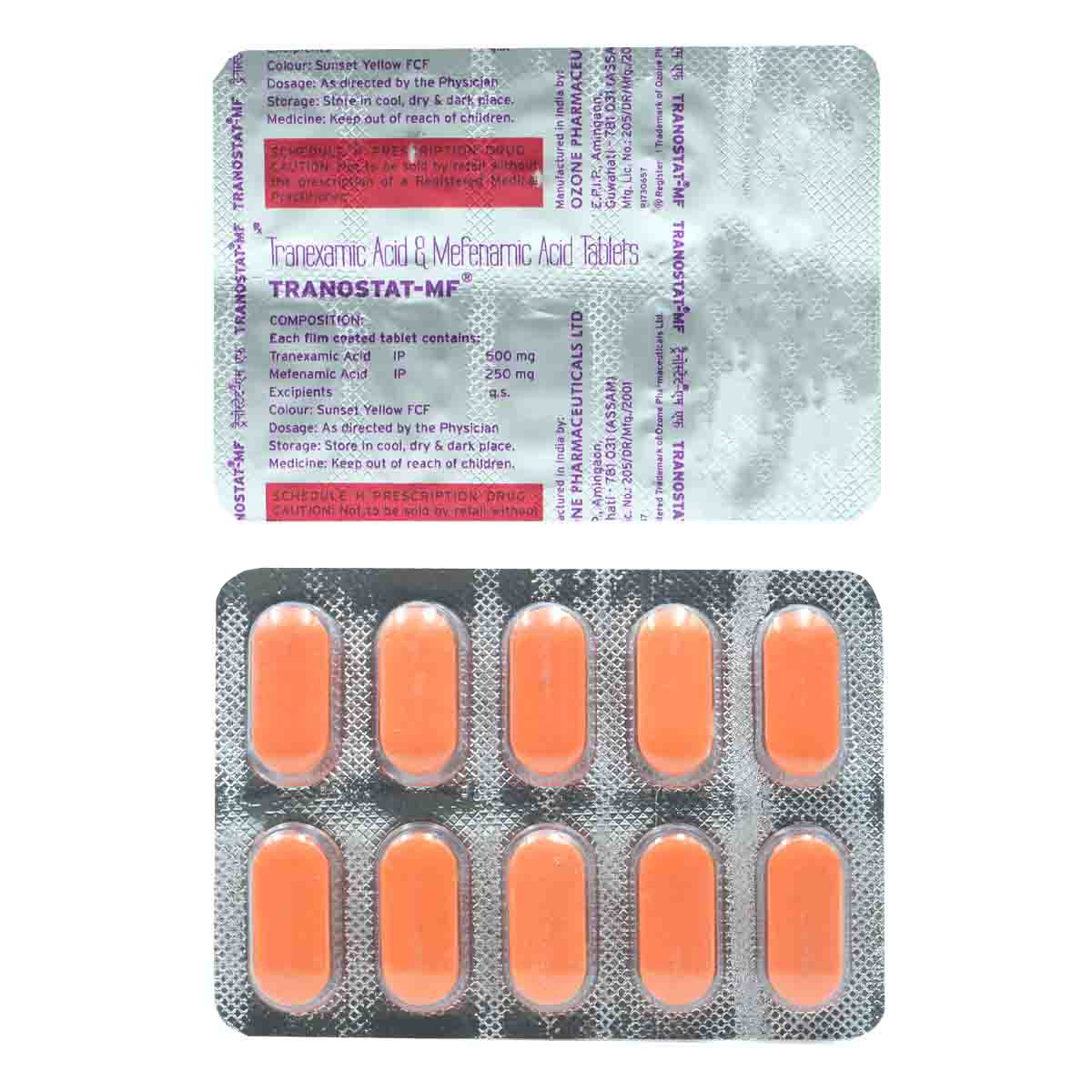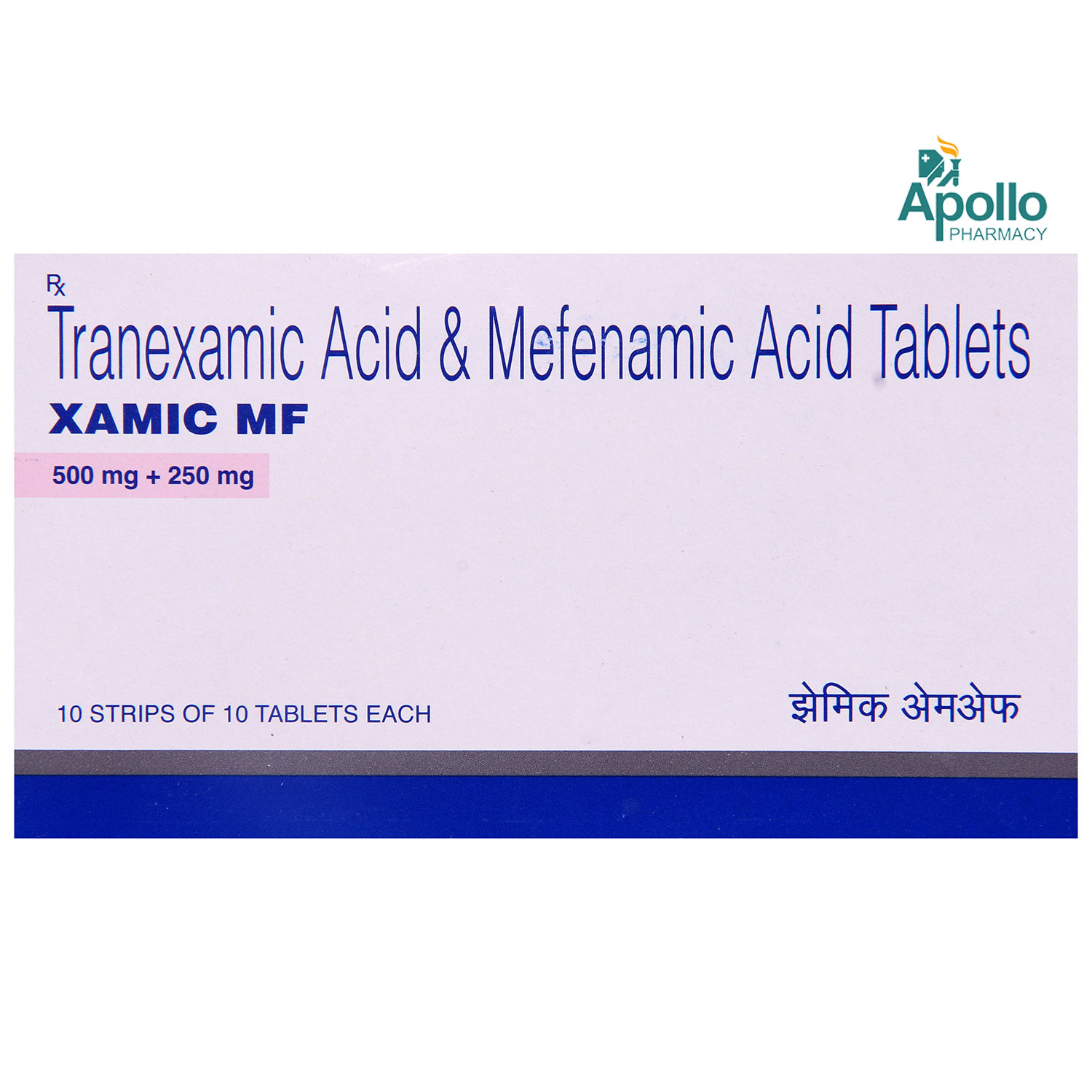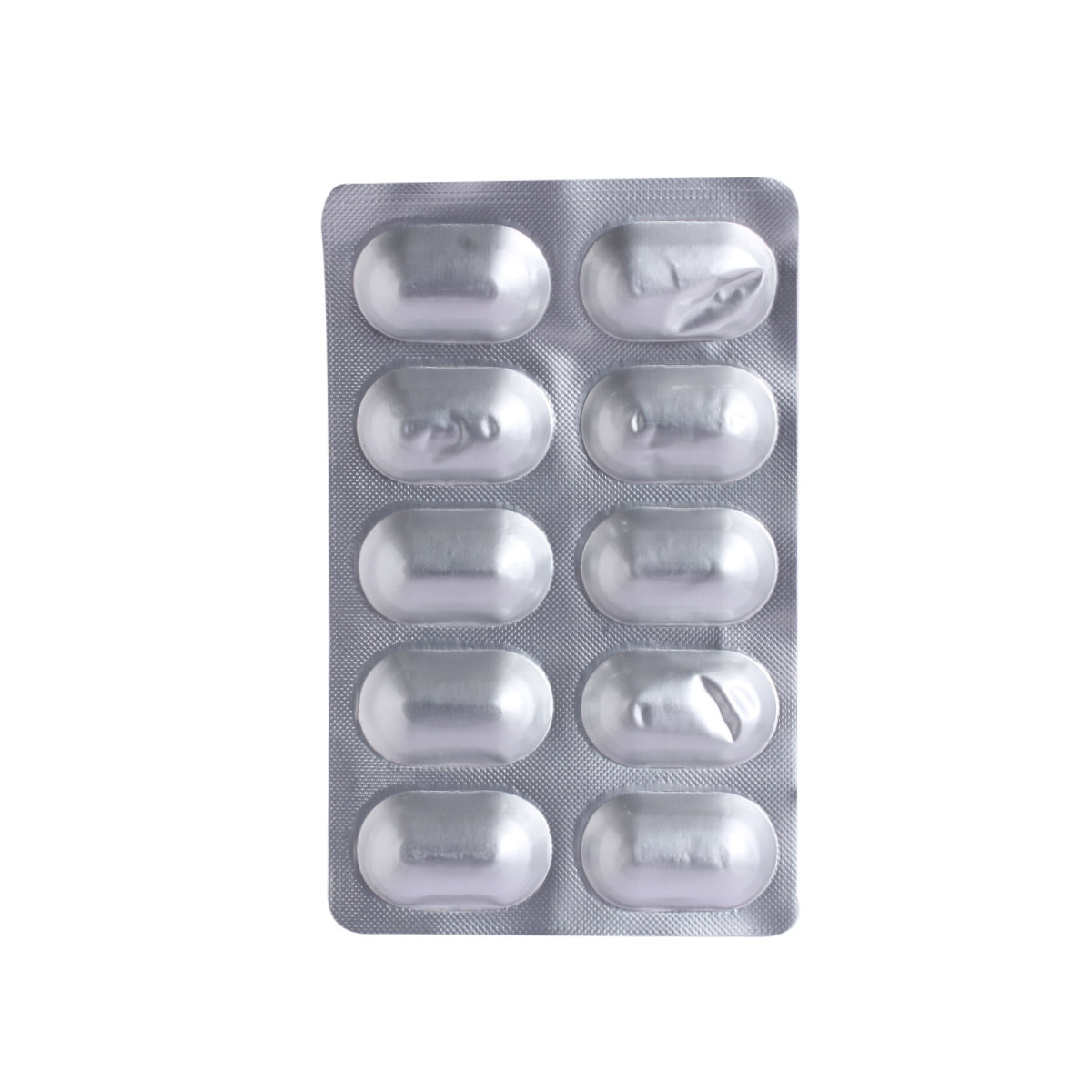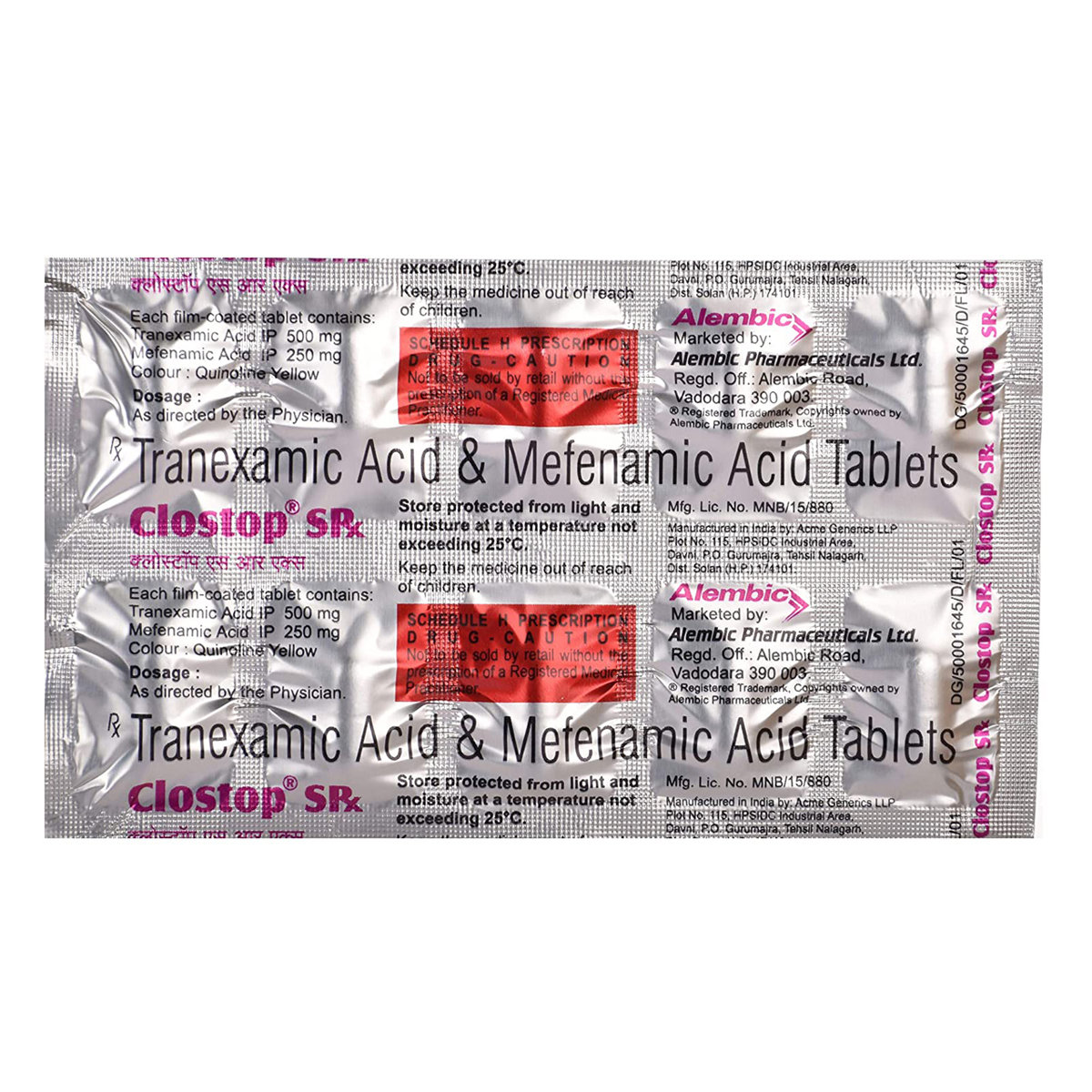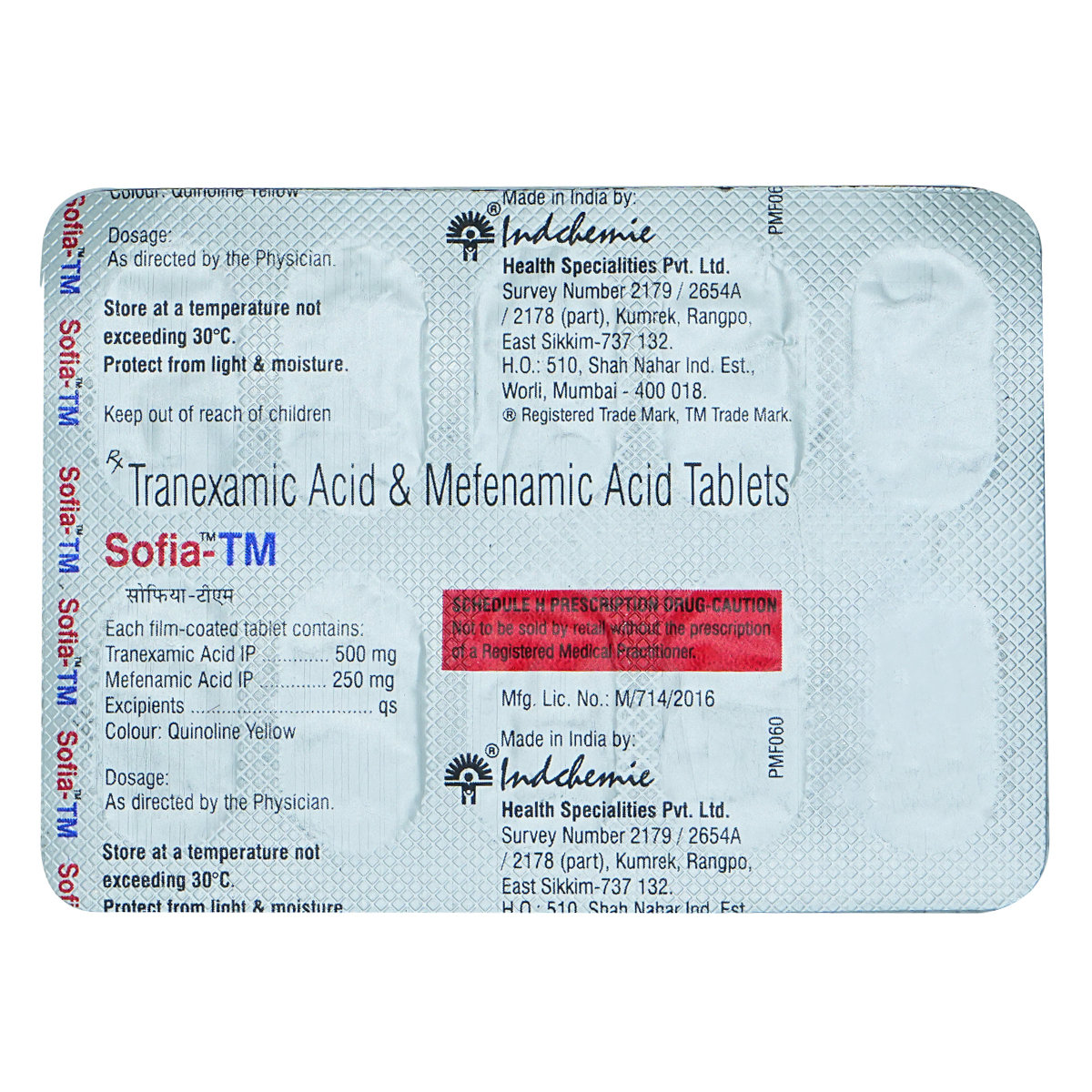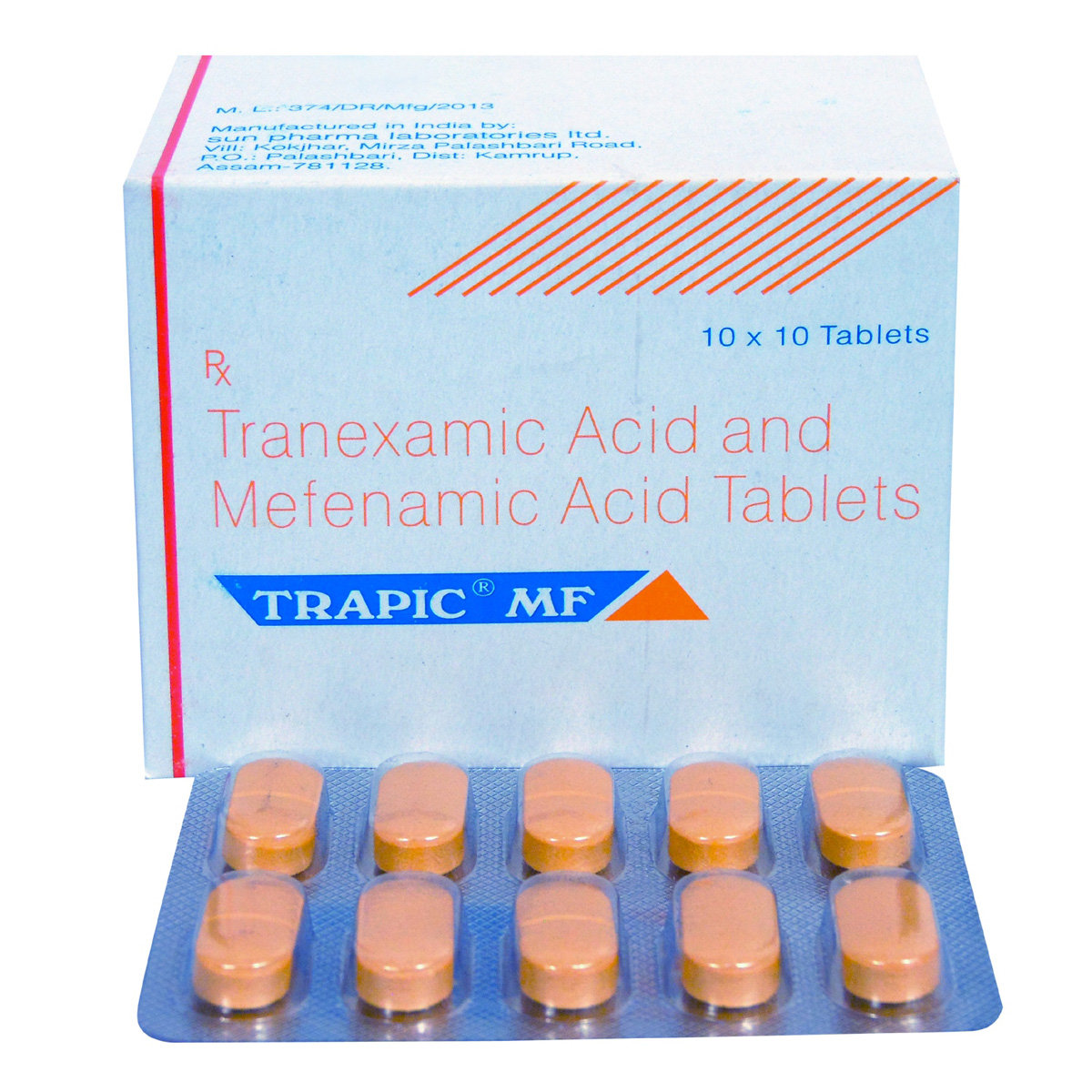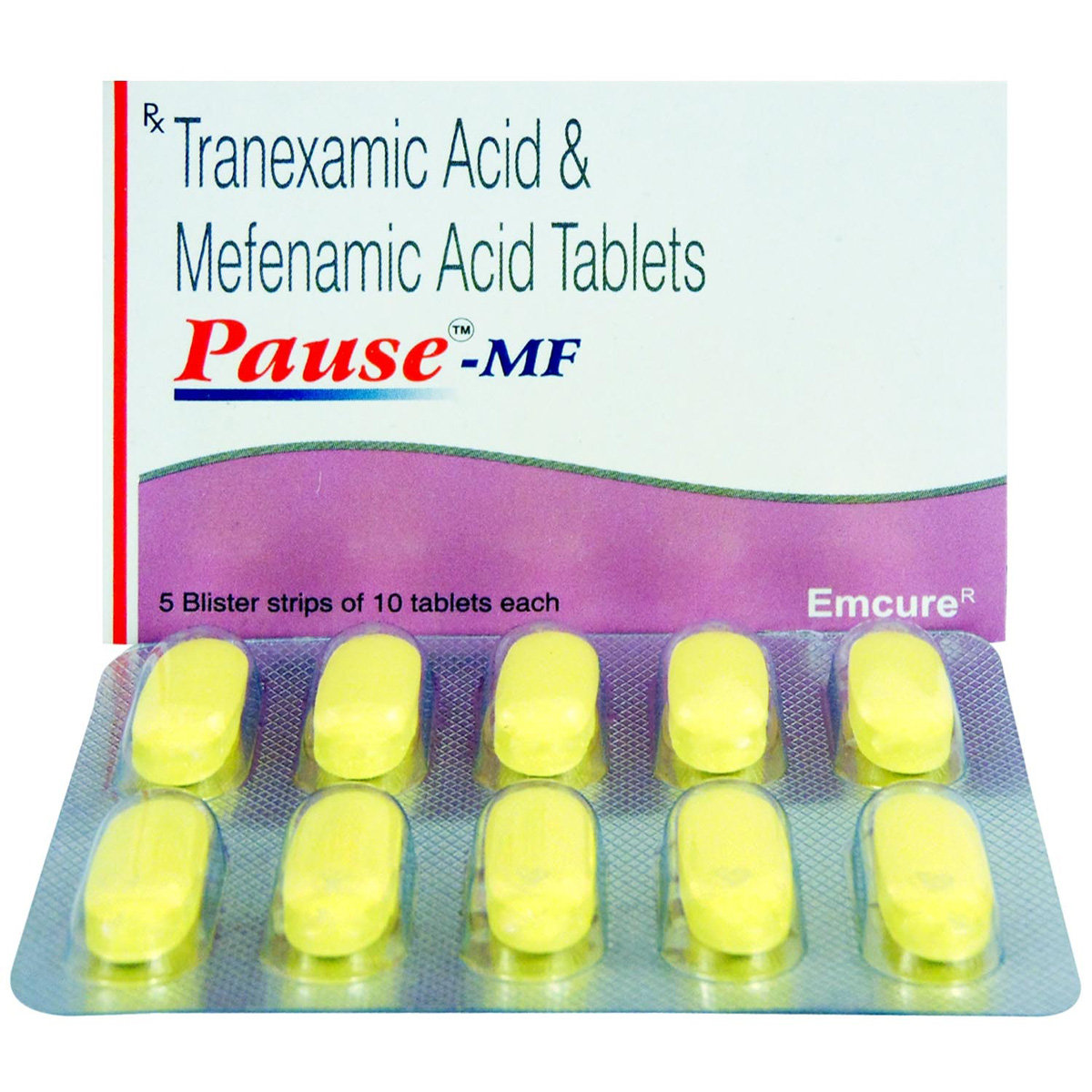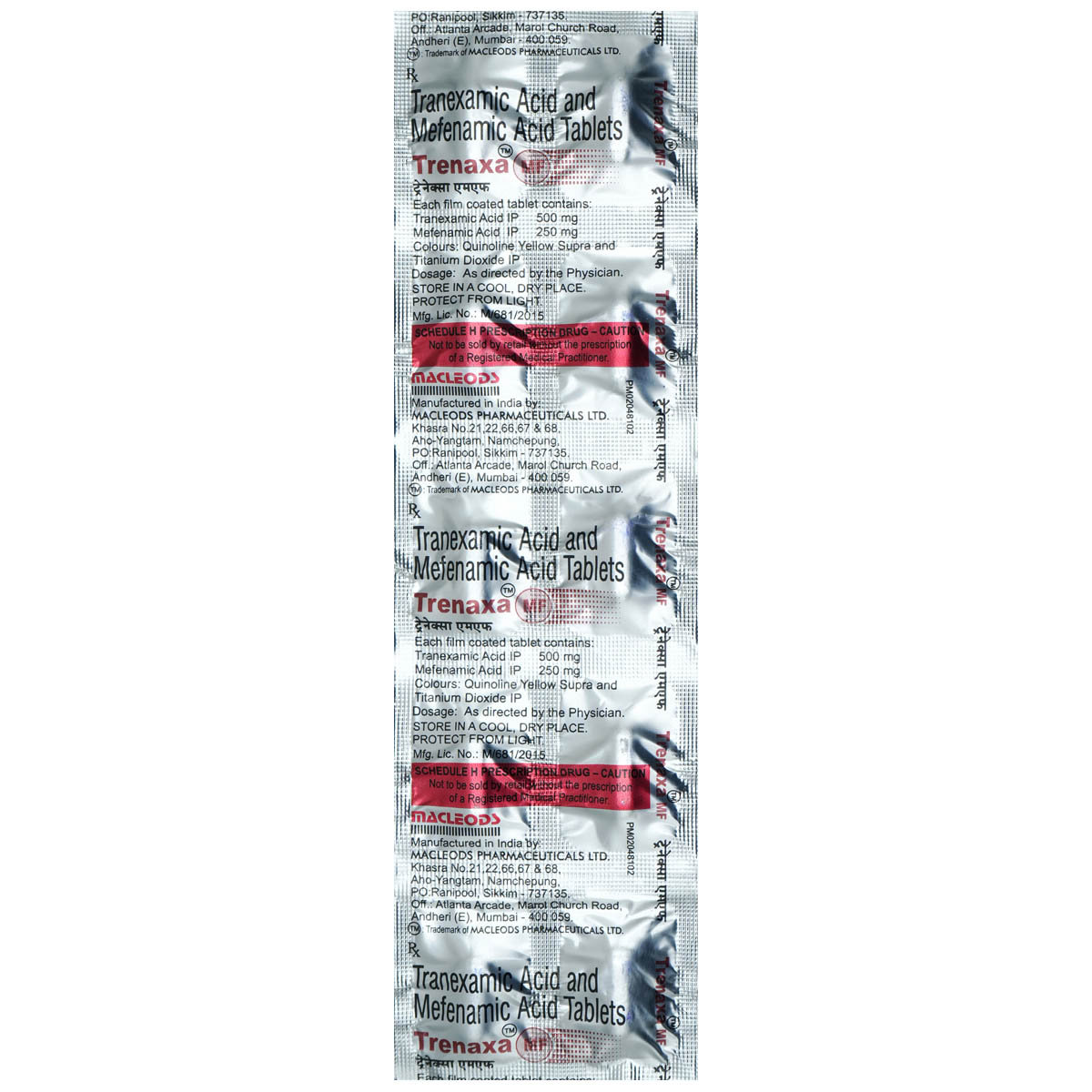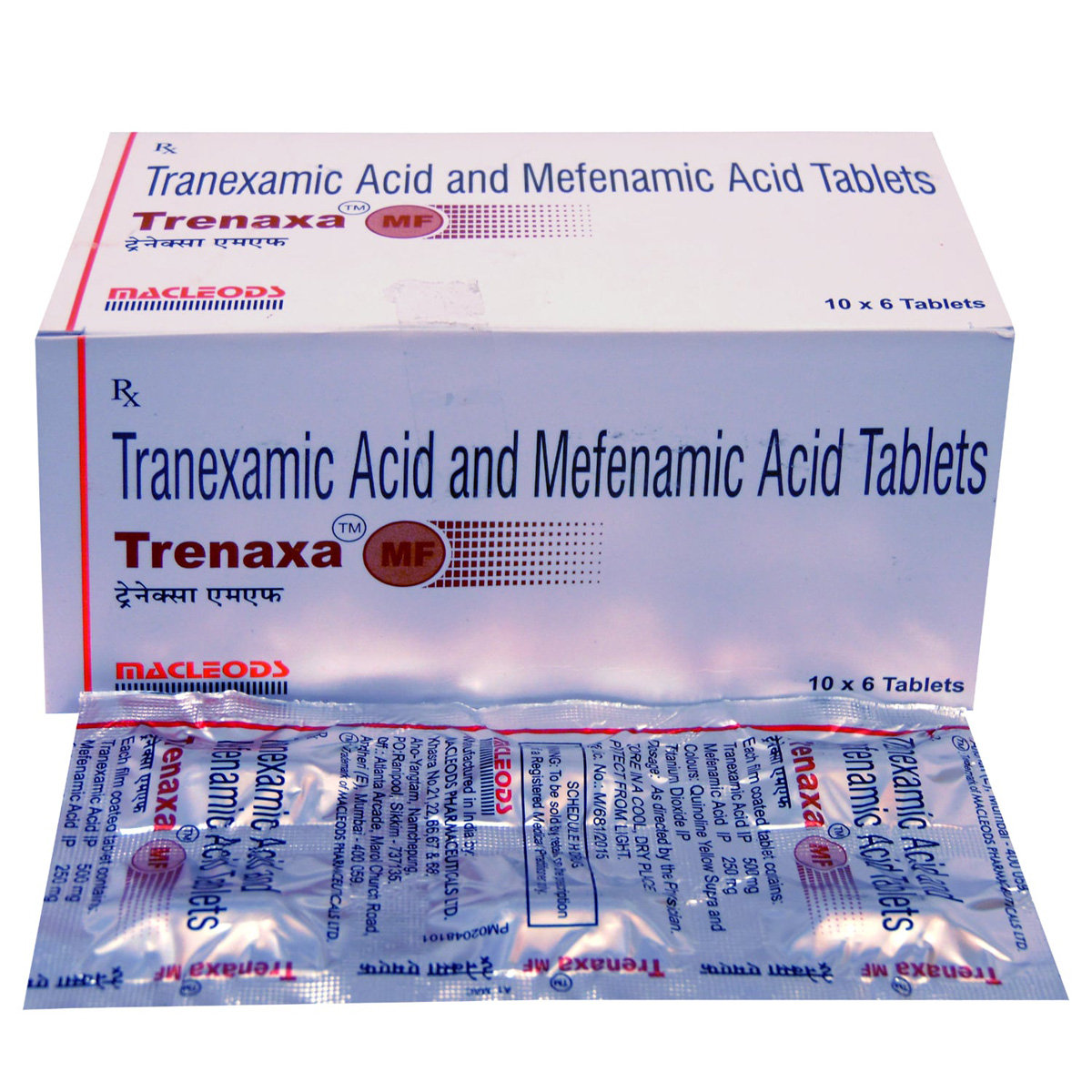- Home
- Translife Tablet
Translife Tablet Substitute
Translife Tablet Substitute
Medicine Composition:
MEFENAMIC ACID-250MG + TRANEXAMIC ACID-500MGAll Substitutes & Brand Comparisons
RX
Tenacid-MF Tablet 10's
Leeford Healthcare Ltd
₹187.5
(₹14.06 per unit)
11% COSTLIERRX
Etosys-MF Tablet 10's
Systopic Laboratories Pvt Ltd
₹229.5
(₹20.66 per unit)
63% COSTLIERRX
Texakind-MF Tablet 10's
Mankind Pharma Pvt Ltd
₹299
(₹26.91 per unit)
113% COSTLIERRX
Texid MF Tablet 10's
Rapross Pharmaceuticals Pvt Ltd
₹329
(₹29.61 per unit)
134% COSTLIERRX
Tranostat MF Tablet 10's
Ozone Pharmaceuticals Ltd
₹356
(₹32.04 per unit)
154% COSTLIERRX
Cosklot MF Tablet 10's
Oaknet Healthcare Pvt Ltd
₹390
(₹35.1 per unit)
178% COSTLIERRX
Xamic MF Tablet 10's
Torrent Pharmaceuticals Ltd
₹406
(₹35.73 per unit)
183% COSTLIERRX
Stalia-MF Tablet 10's
Wanbury Ltd
₹406.5
(₹36.59 per unit)
190% COSTLIERRX
Clostop SRX Tablet 10's
Alembic Pharmaceuticals Ltd
₹424
(₹38.16 per unit)
202% COSTLIERRX
Clostop SRx Tablet 10's
Alembic Pharmaceuticals Ltd
₹424
(₹38.16 per unit)
202% COSTLIERRX
Sofia-TM Tablet 10's
Indchemie Health Specialities Pvt Ltd
₹431
(₹38.79 per unit)
207% COSTLIERRX
Trapic MF Tablet 10's
Sun Pharmaceutical Industries Ltd
₹454.5
(₹40.91 per unit)
224% COSTLIERRX
Pause-MF Tablet 10's
Emcure Pharmaceuticals Ltd
₹523
(₹47.07 per unit)
273% COSTLIERRX
Trenaxa MF Tablet 10's
Macleods Pharmaceuticals Ltd
₹549
(₹49.41 per unit)
292% COSTLIERRX
Trenaxa MF Tablet 6's
Macleods Pharmaceuticals Ltd
₹299.5
(₹49.92 per unit)
296% COSTLIER

When Should You Consider Switching from Translife Tablet?
Patients may explore substitutes in the following scenarios:
- High monthly cost of Translife Tablet
- Non-availability in local pharmacies
- Generic recommendation by a doctor
- Side effects or better tolerability with alternatives
What to Know Before Switching
Before you switch from Translife Tablet to another medicine, here are some important points to keep in mind:
Same salt, different brands:
Most substitutes contain the same active ingredient - MEFENAMIC ACID-250MG + TRANEXAMIC ACID-500MG, but the fillers, coating, or manufacturing quality may vary slightly.
Consult your doctor first:
Even if the salt is the same, your doctor can confirm if the substitute is right for your condition, dosage, and health history.
Watch out for allergies or reactions:
Some people may react differently to certain brands due to inactive ingredients. If you notice any side effects, inform your doctor immediately.
Price ≠ effectiveness:
A lower-priced substitute doesn't mean it's less effective. Many generic medicines work just as well as branded ones.
Check the dosage form and strength:
Always match the substitute’s strength (e.g., 5mg, 10mg) and form (tablet, capsule, syrup) with what your doctor prescribed.
Uses
Translife Tablet is used in the treatment of dysmenorrhea (period pain) and menorrhagia (heavy menstrual bleeding). The detailed uses of Translife Tablet are as follows:
- Management of Menstrual Disorders: Translife Tablet is used to help regulate menstrual cycles in women experiencing irregular periods or hormonal imbalances.
- Relief from Menopausal Symptoms: Translife Tablet can alleviate symptoms associated with menopause, such as hot flashes and mood swings.
- PMS Symptom Relief: Translife Tablet is effective in minimizing premenstrual syndrome (PMS) symptoms, including cramps, anxiety, and other mood-related issues associated with the menstrual cycle.
Medicinal Benefits
- Translife Tablet is used to treat abdominal pain, dysmenorrhea (period pain), and menorrhagia (heavy menstrual bleeding).
- Additionally, Translife Tablet is also used to treat severe blood loss, swelling in various body parts, fever, inflammation, and migraine headache.
- Translife Tablet is a combination of two drugs, namely: Tranexamic acid and Mefenamic acid.
- Tranexamic acid is an anti-fibrinolytic agent that helps the body's natural blood clot process by preventing fibrin's breakdown, this stops fibrinolysis, a process that stops blood clot formation.
- Mefenamic acid is an NSAID that works by blocking the effect of a chemical messenger in the body, known as cyclo-oxygenase (COX) enzymes that make other chemical prostaglandins.
- By blocking the COX enzyme's effect, lesser prostaglandins are produced, which reduces mild to moderate pain and inflammation at the injured or damaged site.
FAQs
The substitutes of Translife Tablet contain the same active salt(s) - MEFENAMIC ACID-250MG + TRANEXAMIC ACID-500MG. However, they may differ in price, manufacturing quality, and inactive ingredients. Speak to your doctor to find a suitable option.
Switching to a generic substitute medicine in the place of Translife Tablet is often possible if it has the same salt, strength, and dosage form. But always check with your doctor before making any changes to your medication.
Generics versions of Translife Tablet are typically more affordable because they don’t include the original brand's research, development, and marketing costs. They contain the same active ingredient and are approved for safety and effectiveness.
Most people don’t notice any difference. However, some may react to different fillers or coatings. If you notice any unusual symptoms after switching, consult your doctor.
Make sure the new medicine has the same active salt, strength, dosage form. Always confirm the change with your doctor or pharmacist.
Substitutes of Translife Tablet meet the same safety and efficacy standards as Translife Tablet, but small differences in absorption or formulation can exist. A doctor can help you choose the right one for your needs.
Yes. Substitutes of Translife Tablet may vary in color, size, or shape due to differences in manufacturing and branding, but this does not affect how they work.
Yes, it’s generally safe to switch between multiple substitutes of Translife Tablet if they have the same salt and strength. However, always inform your doctor so they can monitor how your body responds.
Yes, many people safely use substitutes of Translife Tablet for long-term treatment. Just ensure it’s done under medical supervision.
If your symptoms stay under control or lab results remain stable, the substitute for Translife Tablet is likely working well. Regular follow-ups with your doctor are important.
Absolutely. Even with the same salt, small differences can affect how your body responds when switching from Translife Tablet to its substitute. Always consult your doctor before switching.
Translife Tablet is used to treat dysmenorrhea (period pain) and menorrhagia (heavy menstrual bleeding). Besides this, it is also used to treat severe blood loss, swelling in various body parts, fever, inflammation, and migraine headache.
Translife Tablet contains Tranexamic acid and Mefenamic acid. Tranexamic acid helps the body's natural blood clot process by preventing the breakdown of fibrin, this stops fibrinolysis, a process that stops blood clot formation. Mefenamic acid works by blocking the effect of chemical messengers that cause pain.
Diarrhea might be a side-effect of Translife Tablet. Drink enough fluids and eat non-spicy food if you experience diarrhea. Consult your doctor if you experience severe diarrhea or if you find blood in stools.
Translife Tablet should not be taken for longer durations unless prescribed by the doctor. Translife Tablet is usually prescribed for a few days at the time of heavy bleeding and cramps.
Translife Tablet is used to treat dysmenorrhea (period pain), pain due to heavy bleeding during periods, and menstrual cramps. Take Translife Tablet only as prescribed and do not overdose.
Consult your doctor before taking contraceptive pills along with Translife Tablet. When taken together, there is an increased risk of deep vein thrombosis (blood clot in the deep vein, usually in the legs).
Translife Tablet contains mefenamic acid, an NSAID which might increase the risk of cardiovascular thrombotic events, myocardial infarction, and stroke. Therefore, avoid taking Translife Tablet if you have heart-related problems unless prescribed by the doctor.
Translife Tablet typically starts to show its effects within 1-2 hours of taking it, and it helps to reduce heavy menstrual bleeding by improving blood clotting but does not stop bleeding. However, the exact duration for bleeding to stop can vary from one person to other.
Yes, Translife Tablet can cause acidity. If you experience heartburn and indigestion, it's advisable to take Translife Tablet with food to minimize discomfort. If the symptoms persist, please consult your doctor.
Yes, Translife Tablet is safe if you take as per the dose and duration prescribed by your doctor. However, it's important to be aware of potential side effects and contraindications. Always consult your doctor before starting any new medication to ensure it is safe for you, especially if you have pre-existing conditions or are taking other medications.
Always follow your doctor's instructions regarding dosage and duration. Usually it is prescribed for a short duration. Do not exceed the prescribed duration. As overuse can lead to side effects and other health issues.
Translife Tablet is a combination of two drugs, tranexamic acid (anti-fibrinolytic) and mefenamic acid (NSAID).
Yes, do not take Translife Tablet if you are allergic to any of its contents or if you have severe heart failure. Inform your doctor if you have/had deep vein thrombosis, pulmonary embolism (block a blood vessel in the lungs), coagulopathy (formation of blood clots), epilepsy, irregular periods, heart, kidney, or liver problems. Consult your doctor if you are pregnant or breastfeeding. Do not take any other NSAIDs for pain relief along with Translife Tablet unless prescribed.
Store Translife Tablet at a temperature not exceeding 25°C. Protect it from light and moisture. Keep out of reach of children.
Yes, you can take Translife Tablet with food. It is often recommended to take it after a meal to avoid stomach upset or other gastrointestinal side effects.
Please consult your doctor if you are pregnant. Your doctor will prescribes Translife Tablet only if the benefits outweigh the risks.
The common side effects of Translife Tablet are nausea, vomiting, diarrhea, indigestion, heartburn, and headache. If any of these side effects persist or worsen, please consult your doctor.
You are recommended to consult your doctor before taking other medicines with Translife Tablet to avoid possible interactions.

